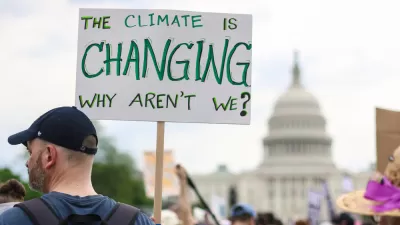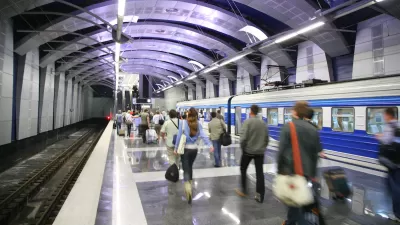Maryland's 1997 landmark smart growth, hailed as one of the most innovative policies in the nation, has turned out to have failed in what it hoped to accomplish - preserve open space and cluster urban growth, according to a just-released report.
The law made then Maryland Governor Paris Glendening's name synonymous with smart growth. The University of Maryland report showing that it failed to accomplish its goals is published in the current issue of the Journal of the American Planning Association.
The "study says the law has been a bust, largely because it has no teeth to force local governments to comply and because builders have little incentive to redevelop older urban neighborhoods.
State planners have failed to prod local governments, which wield enormous control over land use, to approve dense projects in smart-growth areas, the study says.
State money for transportation investments, the centerpiece of the incentives to reduce sprawl, has been minimal: 5 percent of capital spending."
Thanks to Metropolitan Transportation Commission
FULL STORY: Study calls Md. smart growth aflop

Planetizen Federal Action Tracker
A weekly monitor of how Trump’s orders and actions are impacting planners and planning in America.

Restaurant Patios Were a Pandemic Win — Why Were They so Hard to Keep?
Social distancing requirements and changes in travel patterns prompted cities to pilot new uses for street and sidewalk space. Then it got complicated.

Maui's Vacation Rental Debate Turns Ugly
Verbal attacks, misinformation campaigns and fistfights plague a high-stakes debate to convert thousands of vacation rentals into long-term housing.

In California Battle of Housing vs. Environment, Housing Just Won
A new state law significantly limits the power of CEQA, an environmental review law that served as a powerful tool for blocking new development.

Boulder Eliminates Parking Minimums Citywide
Officials estimate the cost of building a single underground parking space at up to $100,000.

Orange County, Florida Adopts Largest US “Sprawl Repair” Code
The ‘Orange Code’ seeks to rectify decades of sprawl-inducing, car-oriented development.
Urban Design for Planners 1: Software Tools
This six-course series explores essential urban design concepts using open source software and equips planners with the tools they need to participate fully in the urban design process.
Planning for Universal Design
Learn the tools for implementing Universal Design in planning regulations.
Heyer Gruel & Associates PA
JM Goldson LLC
Custer County Colorado
City of Camden Redevelopment Agency
City of Astoria
Transportation Research & Education Center (TREC) at Portland State University
Camden Redevelopment Agency
City of Claremont
Municipality of Princeton (NJ)





























